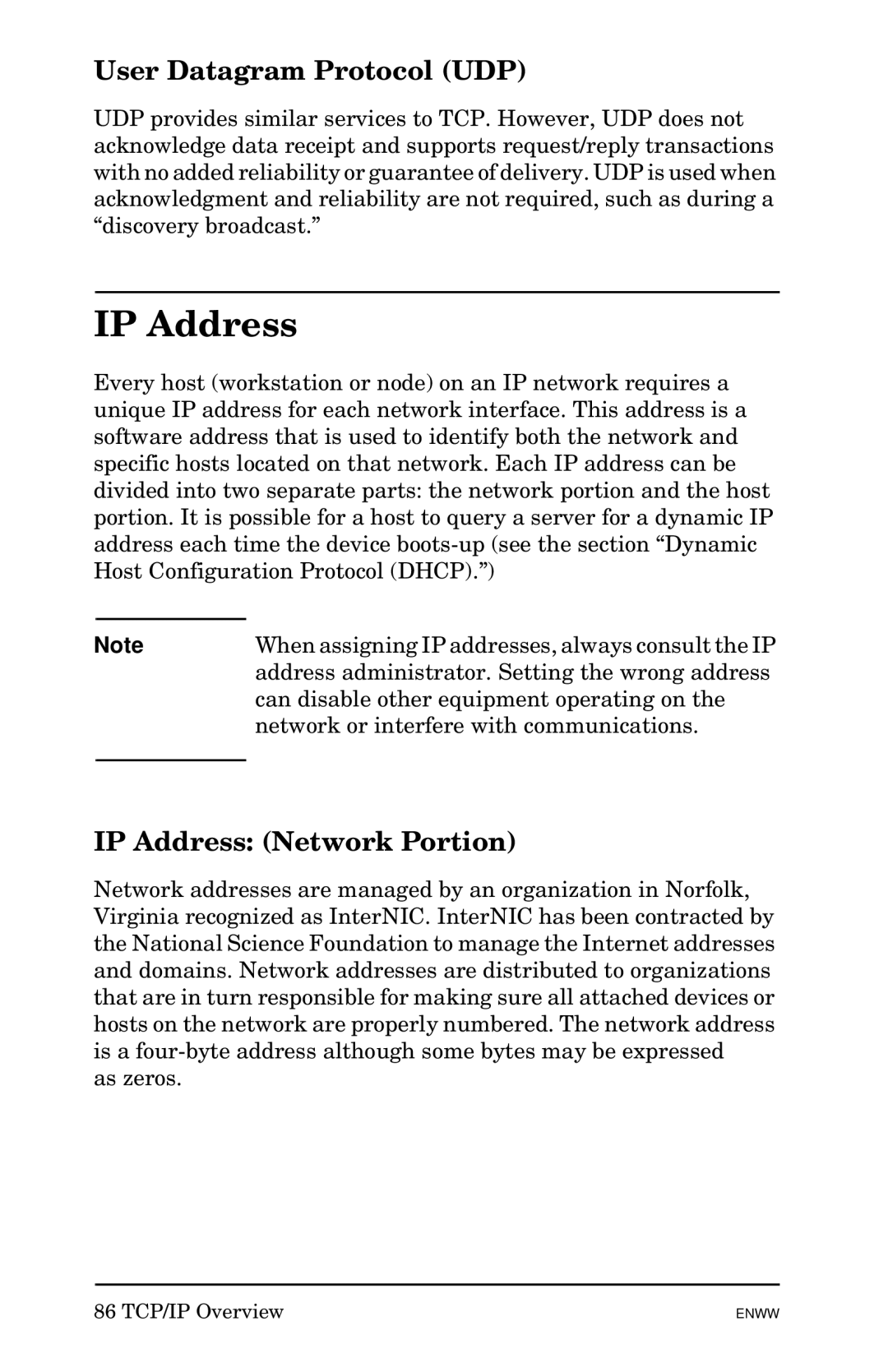
User Datagram Protocol (UDP)
UDP provides similar services to TCP. However, UDP does not acknowledge data receipt and supports request/reply transactions with no added reliability or guarantee of delivery. UDP is used when acknowledgment and reliability are not required, such as during a “discovery broadcast.”
IP Address
Every host (workstation or node) on an IP network requires a unique IP address for each network interface. This address is a software address that is used to identify both the network and specific hosts located on that network. Each IP address can be divided into two separate parts: the network portion and the host portion. It is possible for a host to query a server for a dynamic IP address each time the device
Note | When assigning IP addresses, always consult the IP |
| address administrator. Setting the wrong address |
| can disable other equipment operating on the |
| network or interfere with communications. |
|
|
IP Address: (Network Portion)
Network addresses are managed by an organization in Norfolk, Virginia recognized as InterNIC. InterNIC has been contracted by the National Science Foundation to manage the Internet addresses and domains. Network addresses are distributed to organizations that are in turn responsible for making sure all attached devices or hosts on the network are properly numbered. The network address is a
as zeros.
86 TCP/IP Overview
ENWW
